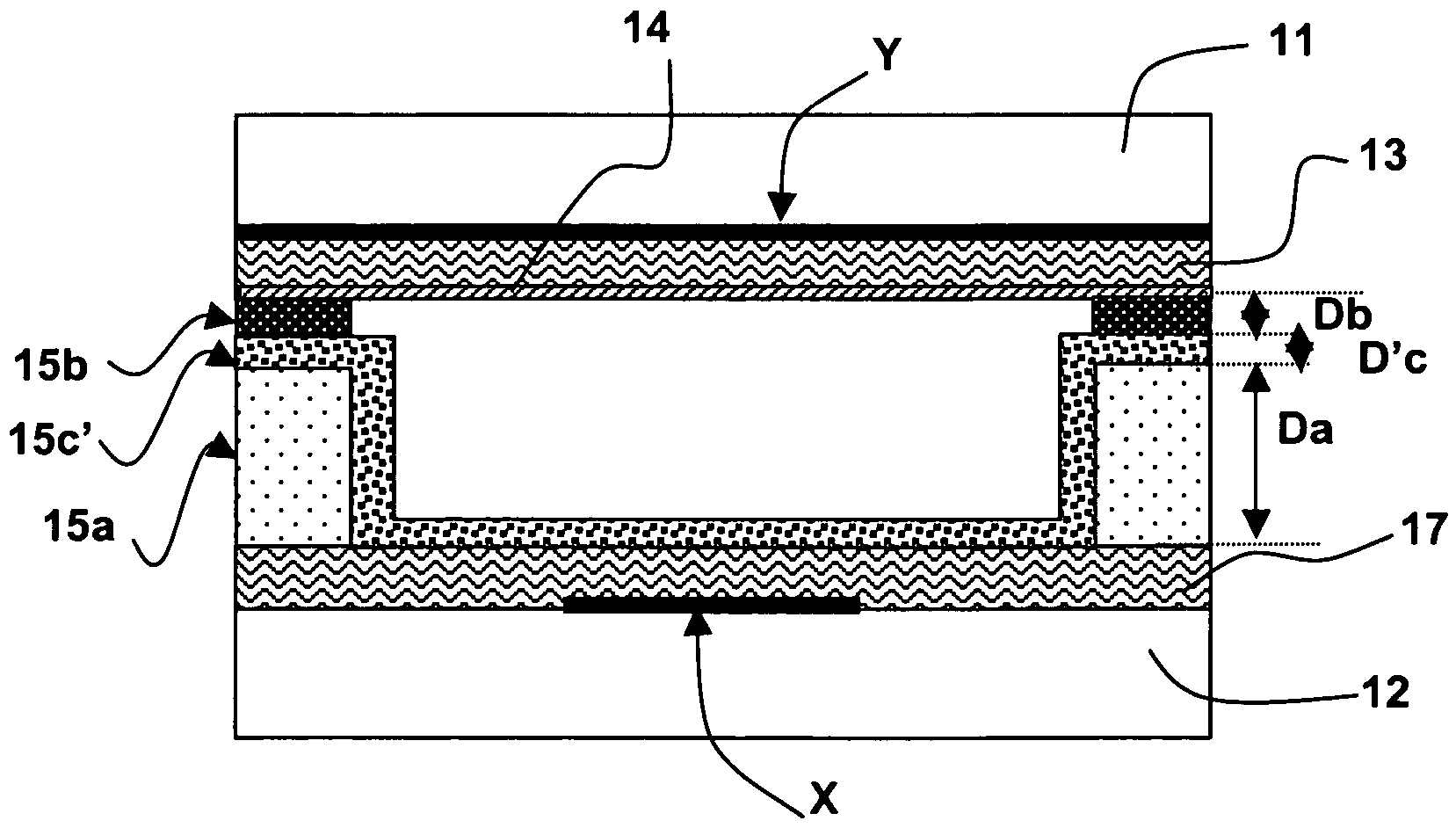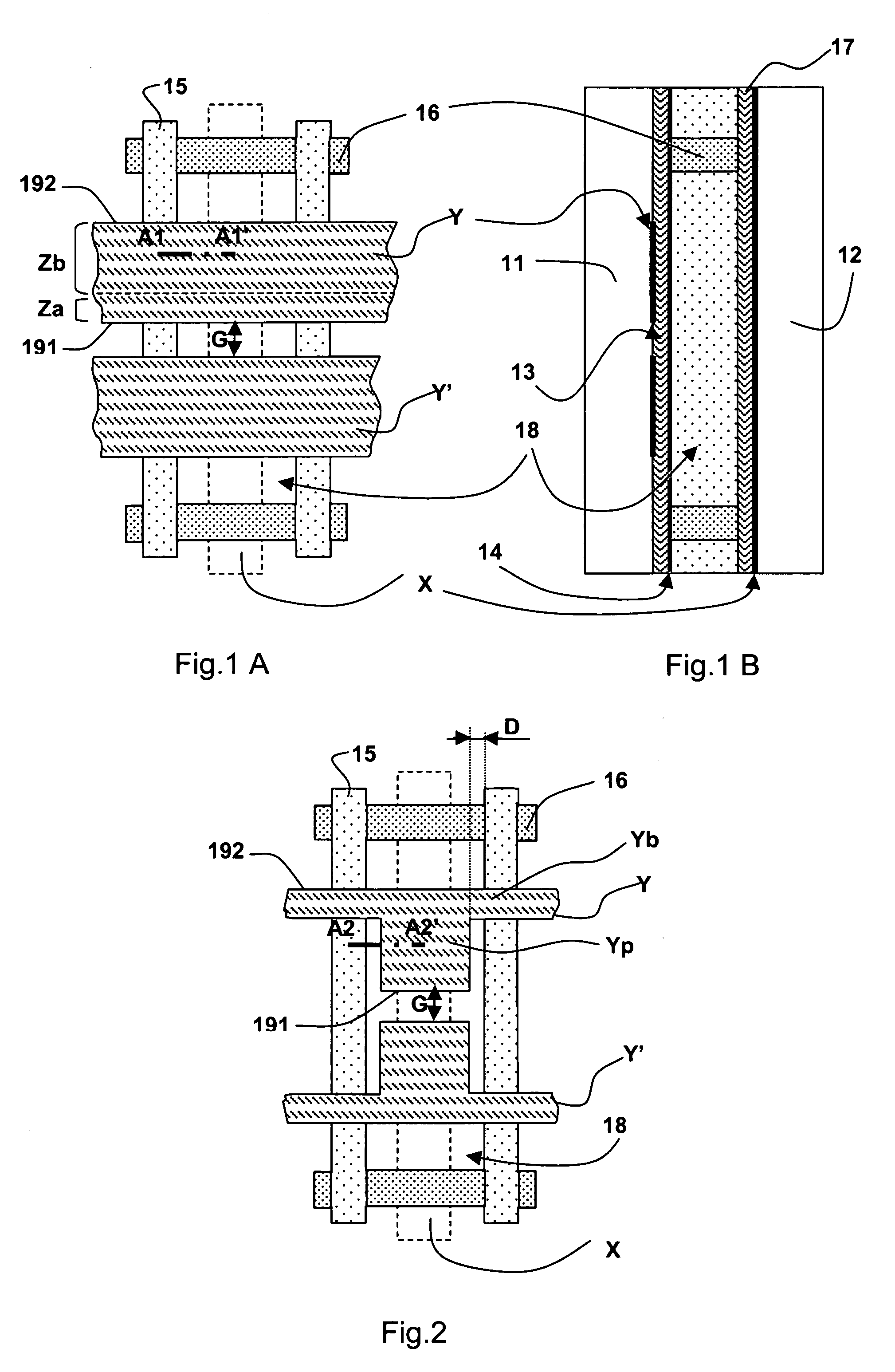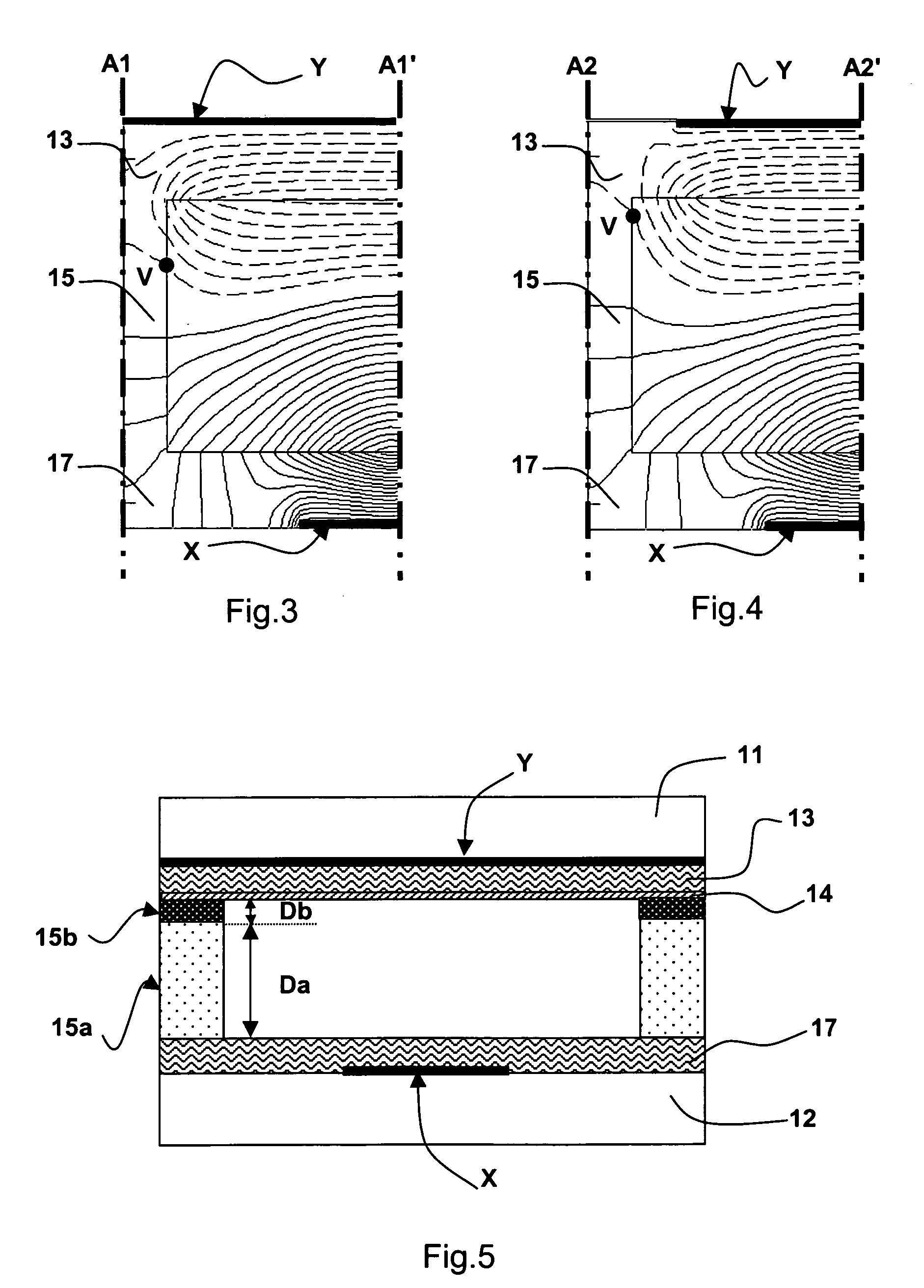Plasma display panel having coplanar electrodes with constant width
a technology of coplanar electrodes and plasma panels, which is applied in the direction of gas discharge electrodes, gas discharge vessels/containers, gas-filled discharge tubes, etc., can solve the problems of reducing the luminous efficiency of the panel, and reducing the lifetime of the panel, so as to increase the luminous efficiency of the plasma panel and its lifetime
- Summary
- Abstract
- Description
- Claims
- Application Information
AI Technical Summary
Benefits of technology
Problems solved by technology
Method used
Image
Examples
first embodiment
[0059]According to the invention shown in FIG. 5, the plasma panel includes the same elements arranged in the same structure as the panel of the prior art described with reference to FIGS. 1A and 1B, the only difference being that the column barrier ribs 15 include a base layer 15a in contact with the dielectric layer 17 covering the array of electrodes X of the second plate 12, and a continuous top layer 15b that is applied to the base layer 15a and extends as far as the dielectric layer 13 and the protective layer 14 covering the arrays of coplanar electrodes Y, Y′ of the first plate 11. Here, the coplanar electrodes each have a constant width over their entire useful length, and the electrode arrays are less expensive to produce and the operation of assembling the plates is not penalized by alignment constraints.
[0060]According to this embodiment, the thickness or height Da of the base layer and the mean dielectric permittivity Ea of its constituent material, on the one hand, and...
second embodiment
[0067]FIG. 8 illustrates, compared with FIG. 5, the invention in which the barrier ribs include a continuous upper layer 15c similar to the top layer 15b described above. This top layer 15c also has a low thickness Dc and a low permittivity Ec. This top layer 15c not only covers, as previously, the top of the barrier ribs but extends here, continuously over the entire active surface of the second plate 12. Such a configuration is advantageously easier to produce than that described above, for example using a screen-printing method for depositing said top layer. Taking Ea=5Ec and Da=5Dc and under the same conditions as previously, a surface potential distribution as shown in FIG. 9 is obtained. This figure shows that the discharge confinement effect obtained is quite comparable to that obtained with the embodiment described with reference to FIG. 7. By comparing FIGS. 7 and 9, it may be seen that replacing a top layer of the barrier ribs with a continuous upper layer coating the enti...
third embodiment
[0071]Furthermore according to this third embodiment, E′c>Ea>Eb and Da>D′c≧Db. Preferably, E′c>5Ea and Ea≧3Eb, with Da≧4D′c and D′c≧Db.
[0072]Apart from a low-permittivity region at the top of the barrier ribs, as in the first and second embodiments, is therefore here a high-permittivity region inserted between the base of the barrier ribs and this low-permittivity region.
[0073]In comparison with the first and second embodiments of the invention, the insertion, into the barrier ribs, of a high-permittivity intermediate region, namely the second layer 15c′, allows the equipotential lines in the barrier rib region corresponding to the first layer 15a and to the second layer 15c′ to be moved further apart, in such a way that the equipotential lines in the third layer 15b are even more closely spaced than previously, thereby improving the confinement of the discharges. Eb=Ea / 5, E′c=5Ea and Db=D′c=Da / 5, the distribution of the equipotential lines illustrated in FIG. 10, over the half-widt...
PUM
 Login to View More
Login to View More Abstract
Description
Claims
Application Information
 Login to View More
Login to View More - R&D
- Intellectual Property
- Life Sciences
- Materials
- Tech Scout
- Unparalleled Data Quality
- Higher Quality Content
- 60% Fewer Hallucinations
Browse by: Latest US Patents, China's latest patents, Technical Efficacy Thesaurus, Application Domain, Technology Topic, Popular Technical Reports.
© 2025 PatSnap. All rights reserved.Legal|Privacy policy|Modern Slavery Act Transparency Statement|Sitemap|About US| Contact US: help@patsnap.com



